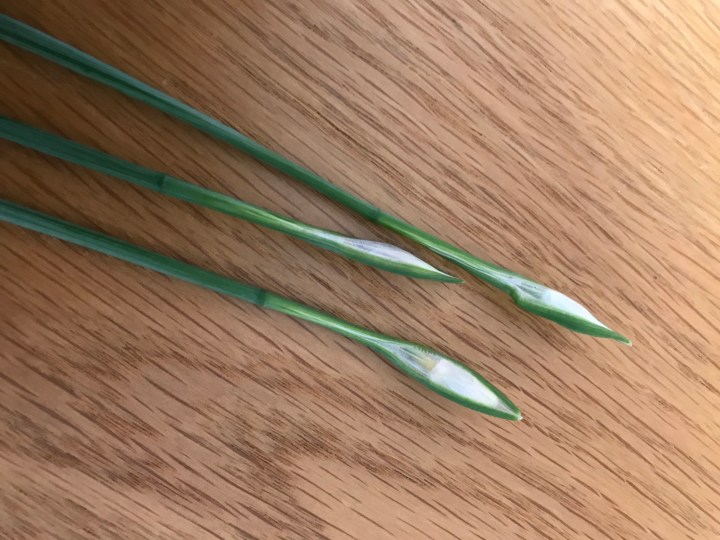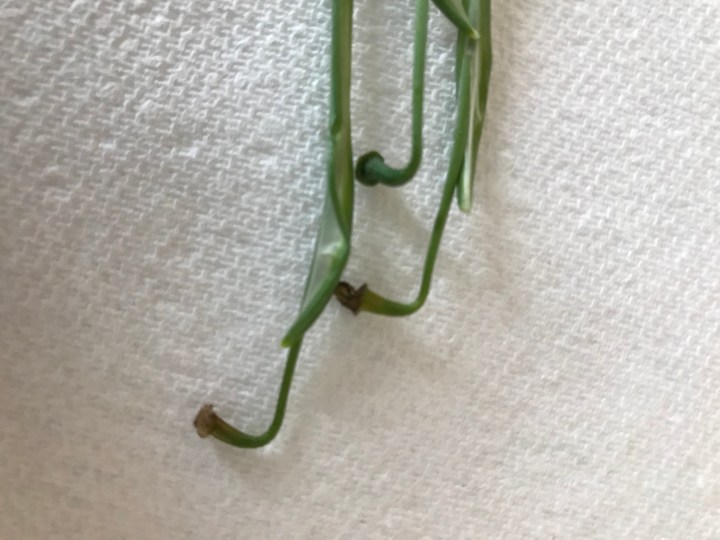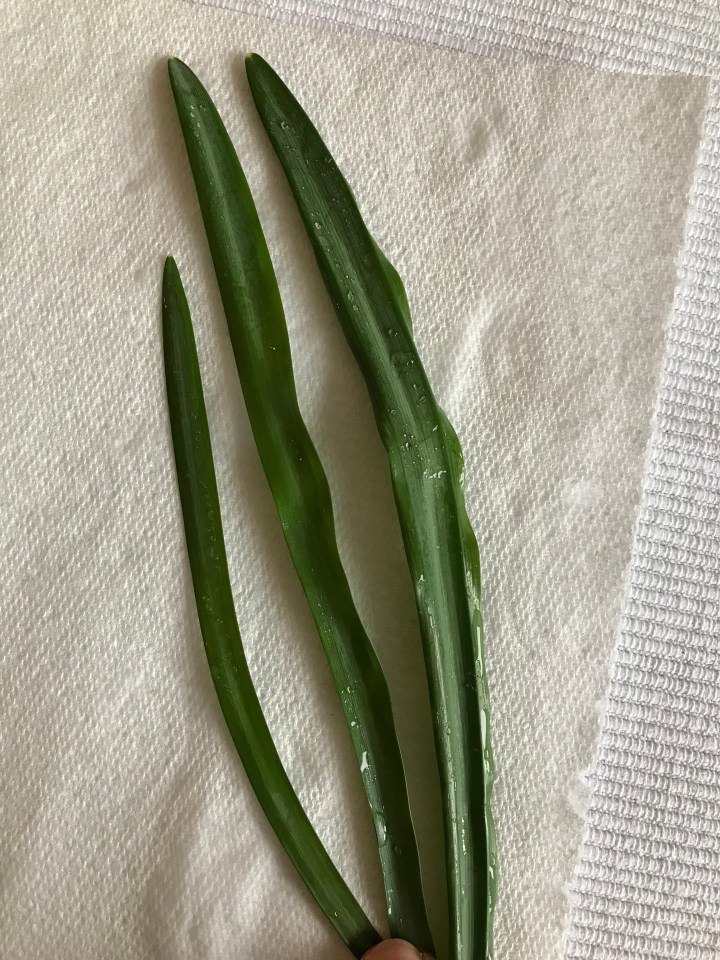We had many snowdrops in our Surrey garden from where we moved nearly five years ago, as the first stage in our French adventure. Mostly they were Galanthus nivalis (i.e. the common snowdrop) but I’d also introduced a few choicer cultivars. I don’t remember where the first snowdrops came from, whether they were already in the garden in 1975 when we moved there, or whether I introduced them. I do remember that I regularly divided them after flowering and spread them further around such that in our final years at the house we enjoyed a sparkling carpet of white early each spring.
I used to love them and often picked them for little vases in the house so I could not only enjoy their beauty close up but also drink in their exquisite honey-scent.
It was therefore natural and obvious for us to introduce snowdrops to our tiny Sussex garden when we began planting. When we bought the house the back garden was covered by AstroTurf and not one single living thing existed. Although I can understand why this may have worked for our predecessors it was most certainly not for us. When the AstroTurf itself was removed we saw that it had been installed very carefully on a bed of hardcore topped by a thick layer of sand. The only way to realistically get rid of all of that was to have a mini-digger (which was *just* able to gain access through the back gate) and a grabber to remove a 30cm layer of the garden across the wall at the back. A 30cm+ layer of topsoil was brought in and spread, a new patio created, and the planting began.
Anyway, back to snowdrops … After the success of the snowdrops in our cold, sandy, SW-facing garden in Surrey we naturally assumed that we could replicate the effect, enjoying the sparkle of white very early in the season followed by the leaves dying back quickly.
Not so. The leaves grow very prolifically but the flowers are relatively few and go over too quickly. And many of the plants send up flower spikes that come to nothing.
I put a couple of tweets out this week to try and see what theories people had to explain this problem. So far nothing definitive has been suggested although the word “virus” has come up from a couple of people.
I promised to try and get some more photos. They are extraordinarily difficult to photograph successfully just using my smartphone especially since both my OH and I are still a little crocked up from our respective heart surgery and broken ankle.

Against the backdrop of a table; you can just see how the green encloses an undeveloped/distorted flower. This is as far as it gets.

And against the backdrop of a paper towel. I tried so hard using all the normal techniques to focus, without success. I also tried against a black background but that didn’t work at all. So forgive the poor quality of these photos.
Here’s some of the flowers that did open … after the petals had gone … showing that they’re not interested in creating a seedhead as would normally be expected.

And finally, three leaves in case this sheds light on the problem.

I’m dying to have an explanation. However, in any case I’ve made the decision that we’re going to dig them all out and dispose of them and start again with snowdrops in the French garden.
Any ideas? Please comment below, or contact me via the usual Twitter / Facebook channels if you’ve any thoughts. Thanks in advance for your ideas and wisdom!
Discover more from The Renaissance Gardener
Subscribe to get the latest posts sent to your email.


Did you ever figure out if these had viruses?
LikeLike
A few helpful comments on twitter suggested probably yes. They were all removed and disposed of.
LikeLike
It seems to me that such a virus should also discolor the foliage with pale streaks. I really do not know because I am not familiar with either the virus or the snowdrops. I just notice that as primary symptom in (some) other virused bulbs.
LikeLike